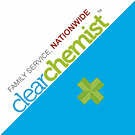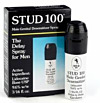At any given time, over two million children in the UK suffer from head lice, but how much do we really know about this common problem.
Here we will dispel some common myths that surround head lice, and take a look at what you can do to prevent your family being affected.
Myths about head lice
Before we look in to what head lice are and what they do, we should clear up some common misconceptions many people have about them.
They only affect children: Head lice are not exclusive to children. While they are far more common in school children, anyone can become infested.
You can catch them from animals: Head lice are only able to survive on human blood, meaning you cannot catch them from an animal.
They only infest long, dirty hair: Head lice are tough and very resourceful; they can survive in hair as short as 2mm in length, and regardless of an individual’s hygiene. Even if you have clean hair, you can still become infested.
They can jump from one head to another: Head lice cannot jump, and they do not have wings, so the only way to catch them is from direct contact. Although head lice can survive for a few hours outside of human hair, so it is always best to avoid sharing bed sheets, combs and brushes.
What are head lice?
Head lice, or ‘Pediculus Humanus Capitis’ are parasites. More specifically they are ‘ectoparasites’. This simply means ‘parasites that survive on its host’s skin’. In the case of head lice, they survive by living of human blood, which they acquire through the scalp.
These parasites have a relatively short lifecycle, and it’s worth noting that some treatments are only effective at certain stages of the lifecycle (more on that later). They begin life as an egg - more commonly referred to as nits, which attach themselves to the lower part of a strand of hair, and are often mistaken for dandruff or hair spray droplets. This stage can last between six to ten days, before the eggs hatch and nymphs are released.
A nymph progresses through three stages of maturity that are known as ‘molts’. After these molts, which last approximately seven days, the nymph becomes an adult louse. A Louse can survive for up to another thirteen days on the scalp, during which time male and females reproduce, resulting in the female laying up to eight eggs a day.
This parasite is very resourceful, and without immediate treatment will thrive on a human scalp. But how did they make their way to you hair?
How do you get head lice?
It is impossible to pin point exactly where an outbreak of head lice originated, but it is easy to determine how an individual has become infested. Since head lice cannot jump and do not have wings, catching them is most the result of head-to-head contact with an existing host. This explains why children and teenagers are more likely to become hosts, as frequent contact with one another is more common.
Can selfies increase your risk of catching head lice?
The rising popularity of group selfies has meant an increase in head to head contact between groups of friends and family. At a glance, selfies appears to be harmless, but giving children another reason to bump heads together can only lead to an increase in the likelihood of an infestation.
Despite direct head to head contact being the major cause of transmission, head lice can survive for a few hours away from a human head. This means that sharing bedding, hats, scarves and hair brushes can put an individual at risk of infestation.
What do head lice do?
Now we know what head lice are and how they come to be on our heads, we need to know what they do when they get there. It is in the best interest of head lice to stay close to the scalp, as this is where they lay eggs and feed.
Unsurprisingly, feeding is the most important activity for a head louse. As we have evolved, so too have the parasites that live on us. In the case of head lice, their evolution has resulted in an urgent dependency on human blood. This means regular feeding of small amounts of blood is crucial to their survival, and explains why head lice do not leave their hosts, unlike their cousin, the body louse (Pediculus Humanus Corporis).
The laying of eggs is another crucial part of the head lice agenda. Remaining close to the scalp allows head lice to lay their eggs on the bottom of a strand of hair, keeping the nit secure, warm and close to a food source upon hatching. It is very common for the majority of nits to be located on the back of the head, near the neck as this is a rich blood source and is very warm. Female head lice stay close to the scalp to maintain their body temperature, which is important for the survival of the eggs.
What are the symptoms of head lice?
Fortunately for us, this common parasite is more of a nuisance than a serious health risk. Despite popular belief, head lice do not spread disease but they do cause irritating symptoms that can result in major discomfort in some hosts.
One of the first things an individual will notice if they are suffering with head lice is a tickling sensation on their scalp. This is due to the head lice moving around and really is just a tickle. The real problems result from the feeding of the lice.
When head lice feed, they release saliva. This saliva prevents the blood from clotting while they are feeding. The saliva combined with the waste of the lice can produce an allergic reaction in the host that can range from mild to severe. These reactions manifest as red patches on the scalp and the top of the neck that become sore and itchy. The most severe issue that can arise from a head lice infestation is an infection due to the exposure of severely scratched skin to the lice waste.
We can all agree that none of this is desirable, but despite us now knowing that head lice are not linked to poor hygiene, there is still a social stigma attached to having head lice. So how do we get rid of them?
How to treat a head lice infestation
There are a number of treatments available to those who wish to rid themselves and their family of head lice, but it can be a lot harder than most think to fully eradicate an infestation. No treatment can be 100% effective, so you should be prepared to deal with re-infestations.
The first step to driving head lice out is a process called ‘wet combing’ which can be used to confirm the presence of head lice and to start to get rid of them. First, run an ordinary comb that has been washed with water and ordinary shampoo through the hair to undo any knots, then proceed to use a wet, ‘nit comb’ to systematically scrap out the lice, nymphs and nits. Be sure to wipe the comb clean after each stroke with disposable paper towel and put it straight in the bin. This process will often crush most of the lice and nymphs while removing the nits. We advise washing all infested clothes and bedding and vacuum cleaning any fabric furniture. You should carry out daily inspections for three to five days to check if there have been any survivors.
As nits are particularly hard to remove, it is possible for some nits to remain glued to the base of strands of hair and cause re-infestation. Should this be the case, you should consult a pharmacist who can recommend a suitable spray or lotion to kill nymphs and lice. After the initial application we recommend you continue to carry out daily inspection for the next three to five days and reapply the product if needed, but always read the patient information booklet provided with the treatments, as some lotions and sprays may not be appropriate for reapplication.
If you have read this post purely out of curiosity, but it has left you scratching your head and thinking “these sound awful, how can I prevent getting them”? We’ve got some last pieces of advice for you.
How do we prevent head lice?
When it comes to adults being at risk of head lice infestations, rugby players and other sports teams should be aware if their team mates have children who could have passed on infestations, and avoid head to head contact with them when possible.
Head lice are a lot more common in children of schooling age, therefore parents and carers of all description should encourage children to not huddle together at school during sports and break times, keeping their heads separate. Anyone with long hair should keep it tied up when around others who may be infested.
When not at school, children should not be encouraged to share personal items such as hats, scarves and hair brushes with their friends and before sleepovers parents should check for head lice.
A final rule for both adults and children who are seeking to avoid hair lice, is to stop taking so many selfies, it will help keep your scalp clear while keeping everyone else’s Facebook newsfeed selfie free, leaving more space for you to share this post to keep your friends and family members up-to-date on what we’ve covered.
We’re interested to hear about your top tips for treating and avoiding head lice, please leave a comment below and repost to share the facts.













